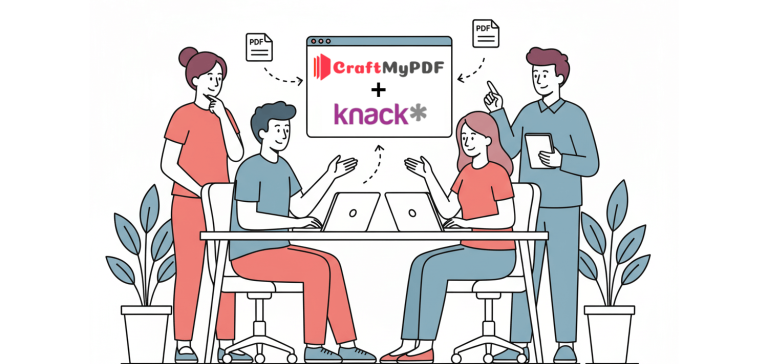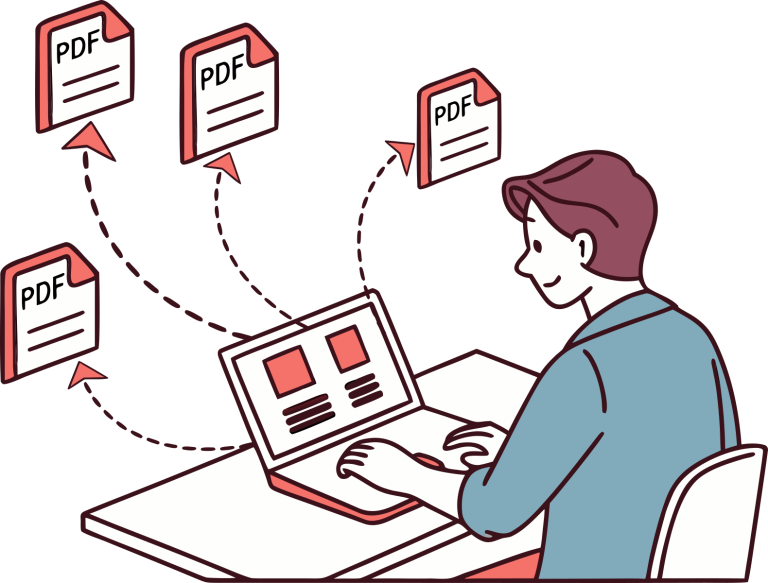1. Introduction
To fully grasp the concept of an “API Economy,” we must first understand the bedrock, which is APIs, and why we require them. Let’s get this conversation started!

The Application Programming Interface (abbreviated as API) is a software intermediary that allows two applications to communicate with one another. Consider this scenario: you order a cup of coffee, they tell you how much it costs, and you pay for it. The process of getting the coffee isn’t your concern, after all, you get what you pay for, right?
Consider the same scenario but with the internet. When you use an internet-based application, your data is never completely revealed to the server, and vice versa. Instead, data is transmitted only by sharing what is necessary. No-code platforms like Zapier and make.com, Google maps, and CraftMyPDF for PDF and Image generation, are all examples of APIs which I will talk about in more detail, so stay tuned.
API Economy is simply the exchange of procedures and concepts between providers and customers that is centered on the use of APIs in today’s digital economy. It makes it possible for the software to work together and communicate effectively while ignoring any incompatibilities that may arise due to program differences.
APIs were previously mainly used by software developers to tackle issues with data exchange and breaching. The significance of APIs became apparent after social media applications and mobile applications proved their strength and usefulness, and as a result of their growing financial revenues, the relevance of APIs became clear.
2. Benefits and Challenges of API Economy

The world is evolving. Every day, an increasing number of businesses share their services and data with others. This allows them to increase their resources by sharing a small fraction of their services as an API.
A food app, for example, may combine a communication API, a billing API, and sometimes even a mapping API, all of which provide different functions to users. This enables businesses to move quickly from a prototype to a finished product, and the best part is that large projects can be built using APIs from evolving providers.
As great as it all sounds, there are some drawbacks, particularly for those who are not technologically savvy. Most businesses do not understand how APIs work and are unsure of which APIs they require. They simply outsource and expect the providing company to complete the task. They have no idea how or if the APIs are implemented correctly. This puts the product at great risk.
The API economy also faces other difficulties, such as deploying backend systems and administering APIs. The APIs must be protected against misuse and restricted to only those with permission. Even if it may appear challenging to complete all of these, we must make sure they are done properly. The most effective approach to make sure that all of these challenges are being overcome is to incorporate relevant analytics into your APIs.
3. How can API services transform and power the industry?
Companies are confronted with greater uncertainty than ever before. These days, businesses are looking for ways to automate their processes to make their work faster, reduce salary rates, and increase company profit. Tech firms are thriving. Businesses like this rely on software companies to provide these services. The API economy has the power to transform businesses in this position.
The agricultural sector, for example, focuses on improving machinery products to aid in efficient production, consumption, and labor reduction. To accomplish this, machines are being programmed to perform tasks far more quickly than humans could. This is where API comes into play and changes the game. Businesses like this rely on IT for integration, deployment, and, most importantly, uninterrupted service.
Another illustration is a banking application, which needs APIs to enable smooth transactions. We can quickly authenticate ourselves on the applications without having to endure a time-consuming authentication process thanks to its Login API.
Additionally, it makes it simpler for us to carry out operations involving other banks, such as sending money, paying our bills like our water and electricity bills using a Billing API, and many more. It also enables us to easily create virtual cards that we can use to make purchases online from third parties like Amazon, Apple, and many more. When performing external services, you don’t need to worry because APIs handle everything with ease.
4. Why is the API economy important for digital transformation?
The API economy has evolved from a technical necessity to a business imperative. Utilizing third-party APIs from other businesses to enhance the product has enabled businesses to be successful. If done correctly, this will transform the economy in the following ways:
- It enables businesses to integrate with various platforms without taking any risks.
- It helps businesses build products that offer customers essential services.
- It helps businesses develop sophisticated consumer experiences across multiple platforms
- It helps enhance transparency and visibility while increasing productivity and lowering operating costs
- It would help commercialize a company’s data and services by increasing revenue and profits.
- It enables customers to use services that would be costly or time-consuming to develop internally.
- Companies that employ this model add value to API producers’ services and assemble a crucial number of customers to establish a market.
The need to protect APIs is important, this gave rise to a new category called “API security economy,” which is one reason why their use is rapidly expanding.
5. Examples of API economy
The capability of the API economy is utilized by some pretty great applications. Here is a list of some of my preferred choices:
- Twilo API: Twilio is a platform that utilizes numerous APIs. It offers a wide range of distinct REST APIs for many different purposes, including managing accounts, placing phone calls, sending text messages, and much more. Twilio also makes use of webhooks to notify your program whenever events take place, such as getting an incoming call or receiving an SMS message.
- Google Maps: Google Maps makes excellent use of the benefits of the API economy. It contains several robust APIs, like a mapping API that connects every location, a directions API that can recommend the best routes for you to follow, a distance API that can estimate how long it would take you to reach somewhere, and many more. Amazingly, Google Maps now allows you to insert the current map into your website or blog without having to know any code or using the Google Maps Platform.
- No-code platforms (Zapier and Make): Numerous APIs are used by no-code platforms like Make.com and Zapier. The Zapier platform links applications for simple conversation flows. Consider a networked environment where various applications can communicate with one another, this is Zapier’s strength. Make.com enables you to visually design, construct, and automate workflows using APIs. It offers a smooth experience by integrating systems and making data sharing amongst all tools simple. These two platforms’ greatest strength is that neither of them needs any programming knowledge.
- CraftMyPDF: The CraftMyPDF platform utilizes several great APIs. It is a PDF generation API that enables you to easily create PDF documents that simultaneously exemplify what you require, such as invoices, reports, packing slips, legal documents, and images (JPEG/PNG), without the expense of maintenance. Additionally, it is integrated with Zapier and make.com, making it a no-code platform.
6. Conclusion
APIs are not only for tech companies. These days, different businesses use APIs for automating procedures, enabling collaboration between various applications, monetizing operations, enhancing tactics, creating helpful products, and much more.
The API economy is essential for the expansion of our digital economy. If you are considering maximizing the API economy, you can start by utilizing the applications I outlined above as a starting point. Thank you for reading this far.









